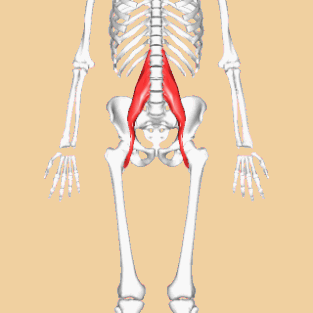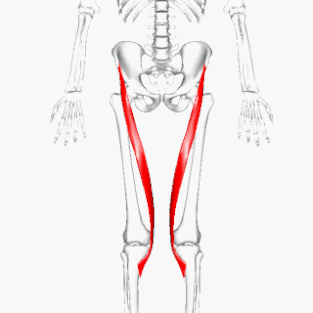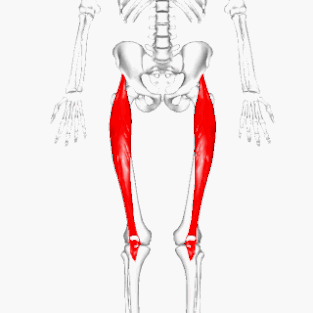In everyday life...
As the name says, we basically need our hip flexors to flex the hips. They're involved in walking, cycling, jumping, climbing up and down the stairs, ... and of course in any sport! Therefore hip flexors are pretty strong. The strongest of them is the psoas muscle with a thickness of about four centimeters / 1,6 inches!
At the same time, hip flexors - especially psoas - are typically shorthened nowadays because people sit all the time, at work, in the car, in their free time. Thereby we do the opposite of stretching them: The two attachment points of psoas, the spine and the thigh bone approach each other. The muscle gets short and tensed up, which leads to muscle imbalances, misalignments like a hollow back and overutilisation and pain of the antagonists in the lower back. Hello, back pain!
In sports and performance arts...
Regarding sports, there are some which demand stretching the hip flexors to stay injury free like cycling, mountain climbing or athletic sports. The muscles are likely to get overloaded because the hips are very often flexed.
Other sports and performance arts require a certain amount of flexibility to look great: Ballet dancers, martial artists and pole dancers for example need splits into all directions. Aerialists and acrobats also might want a deep backbend.
And here's the good news: If you stretch your hip flexors, you'll improve both!
In a front split, your rear leg will get further down - and in a backbend, needle and chest stand you can get deeper too!
So no matter if your goal is to avoid lower back pain, to reduce the risk of injury or to gain an amazing degree of flexibility, it's always recommended to stretch the psoas and other hip flexors!
To stretch a muscle, you're supposed to move into the opposite direction of its action - hip extension. The opposite of sitting ;-)
How to stretch the Iliopsoas:

- Warmup (leg lifts, squats, cardio,...)
- Lunge stretches -> have a look at the picture on the left!
Make your core as stiff as possible by engaging butt and belly - tuck your hips in: No leaning to the front, no hollow back.
Now push your pelvis forward to get an isolated stretch for Iliacus and Psoas.
You can add simple isometric contractions / PNF or any other effective technique.
- Strengthen your agonists (butt) in a deep range to get nice active splits, especially if you want them in inverted positions where neither your body weight nor momentum will help
you!
A strong butt makes you get deeper, therefore it's crucial to always keep it engaged while stretching the hip flexors.
Do you need a flexibility coach? If you wanna learn more about stretching, anatomy and effective stretching techniques, just contact me!
I do private classes, group classes and individualized training plans for anyone aiming to improve his*her general flexibility, splits or backbend.






Kommentar schreiben